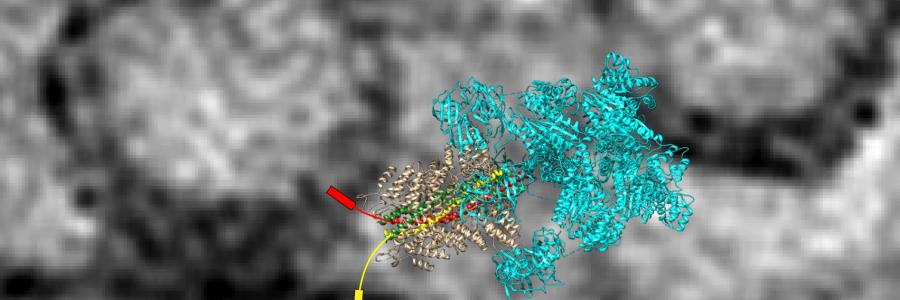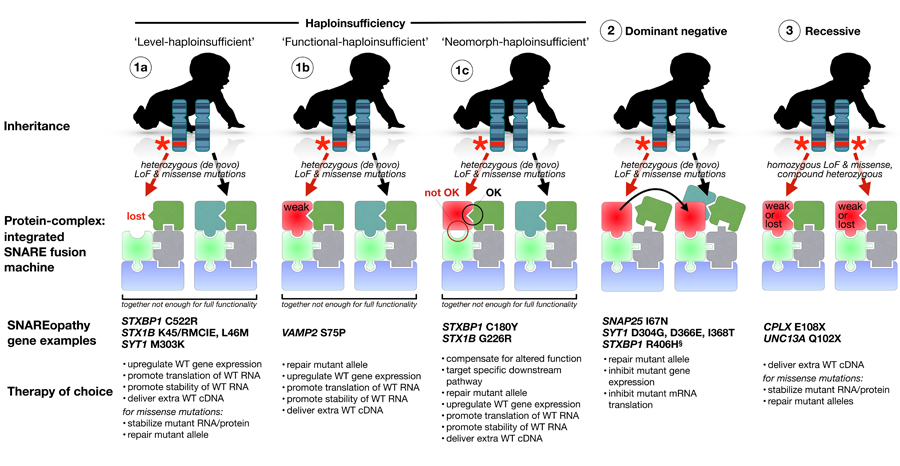
A study by Enqi He (CNCR-FGA) published in Nature Communications demonstrates how synaptic vesicles remain in a high-energy (‘primed’) state, ready to be released. Two proteins, Munc13-1 and Munc18-1, stabilize the primed state by preventing de-priming and hereby support high frequency synaptic transmission.
Mammalian synapses secrete neurotransmitters within milliseconds after activation. This ability depends on the fact that a small number of synaptic vesicles, that accumulate neurotransmitters, are maintained in a high-energy state, known as the primed state, ready to be released. Typical (small) CNS synapses have 4-10 primed vesicles, out of the ~100-200 total vesicle pool per synapse. Much is already known about the molecules involved in priming. Some of these molecules, such as the SM-protein Munc18-1, have also been characterized in yeast and invertebrate systems, as they are part of an evolutionary conserved secretory pathway. The maintenance of a (small) pool of primed vesicles, is thought to be an evolutionary adaptation for rapid synaptic transmission. The biological principles that maintain this primed pool have remained poorly understood.
 The study by Enqi He and colleagues of CNCR-FGA identifies how two synaptic proteins, Munc13-1 and Munc18-1, stabilize the primed state by preventing de-priming. Thay also identify N-ethylmaleimide sensitive factor (NSF) as the enzyme that de-primes vesicles most likely by disassembling the SNARE-complex, the well characterized protein complex that drives vesicle fusion. In synapses that lack Munc13-1 or where Munc18-1 has been replaced by the related, non-neuronal gene Munc18-2, synaptic vesicles can still be primed but the primed state is now instable and vesicles fall back into an unreleasable state, like most vesicles in the nerve terminal. By inhibition of NSF in these mutant synapses using a compound named NEM, He et al. could largely prevent this de-priming and prove that NSF is involved in the de-priming reaction.
The study by Enqi He and colleagues of CNCR-FGA identifies how two synaptic proteins, Munc13-1 and Munc18-1, stabilize the primed state by preventing de-priming. Thay also identify N-ethylmaleimide sensitive factor (NSF) as the enzyme that de-primes vesicles most likely by disassembling the SNARE-complex, the well characterized protein complex that drives vesicle fusion. In synapses that lack Munc13-1 or where Munc18-1 has been replaced by the related, non-neuronal gene Munc18-2, synaptic vesicles can still be primed but the primed state is now instable and vesicles fall back into an unreleasable state, like most vesicles in the nerve terminal. By inhibition of NSF in these mutant synapses using a compound named NEM, He et al. could largely prevent this de-priming and prove that NSF is involved in the de-priming reaction.
For the full text of the paper click here
Scientific abstract:
Synaptic transmission requires a stable pool of release-ready (primed) vesicles. Here we show that two molecules involved in SNARE-complex assembly, Munc13-1 and Munc18-1, together stabilize release-ready vesicles by preventing de-priming. Replacing neuronal Munc18-1 by a non-neuronal isoform Munc18-2 (Munc18-1/2SWAP) supports activity-dependent priming, but primed vesicles fall back into a non-releasable state (de-prime) within seconds. Munc13-1 deficiency produces a similar defect. Inhibitors of N-ethylmaleimide sensitive factor (NSF), N-ethylmaleimide (NEM) or interfering peptides, prevent de-priming in munc18-1/2SWAP or munc13-1 null synapses, but not in CAPS-1/2 null, another priming-deficient mutant. NEM rescues synaptic transmission in munc13-1 null and munc18-1/2SWAP synapses, in acute munc13-1 nullslices and even partially in munc13-1/2 double null synapses. Together these data indicate that Munc13-1 and Munc18-1, but not CAPS-1/2, stabilize primed synaptic vesicles by preventing NSF-dependent de-priming.